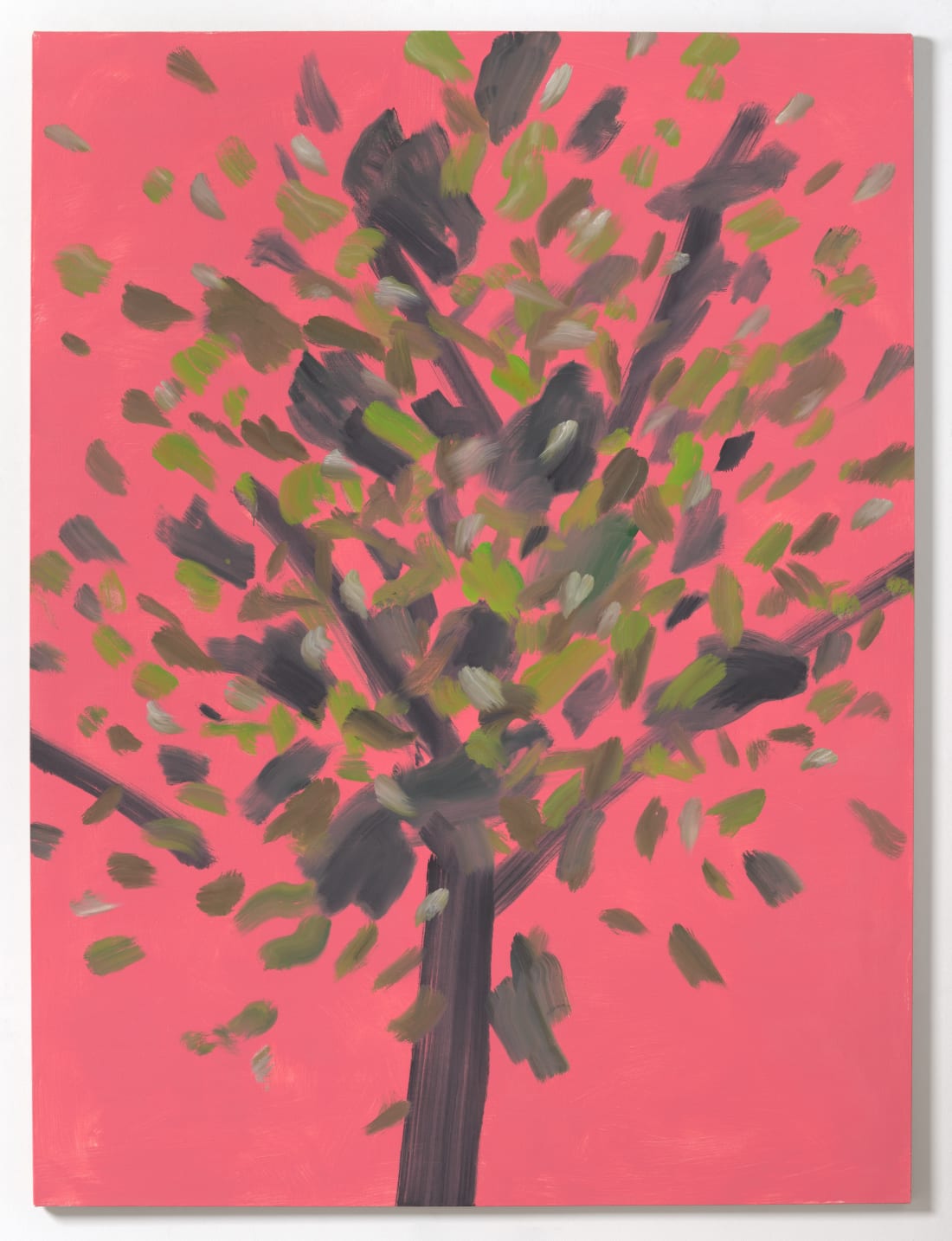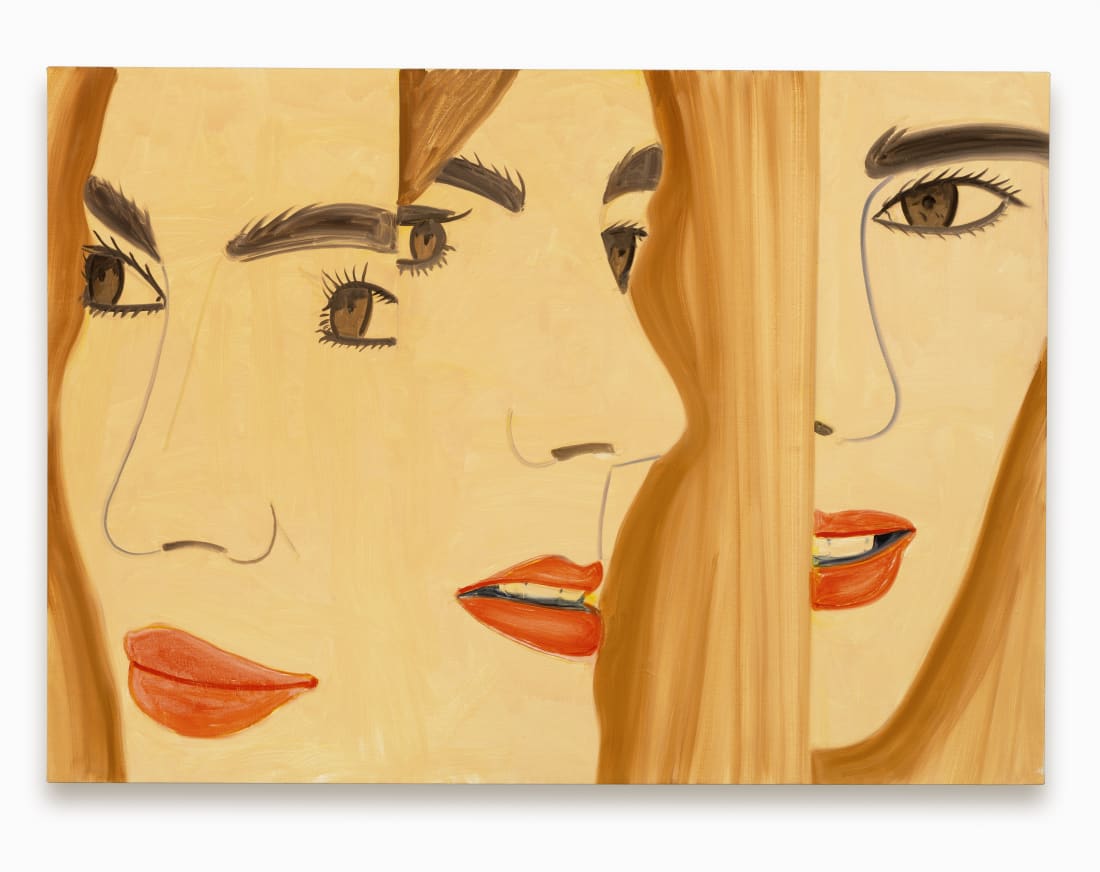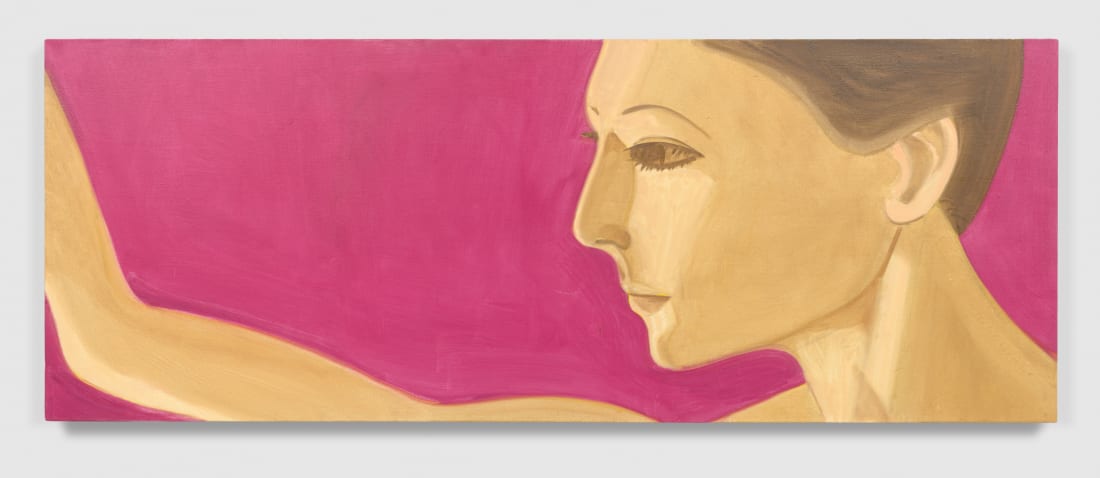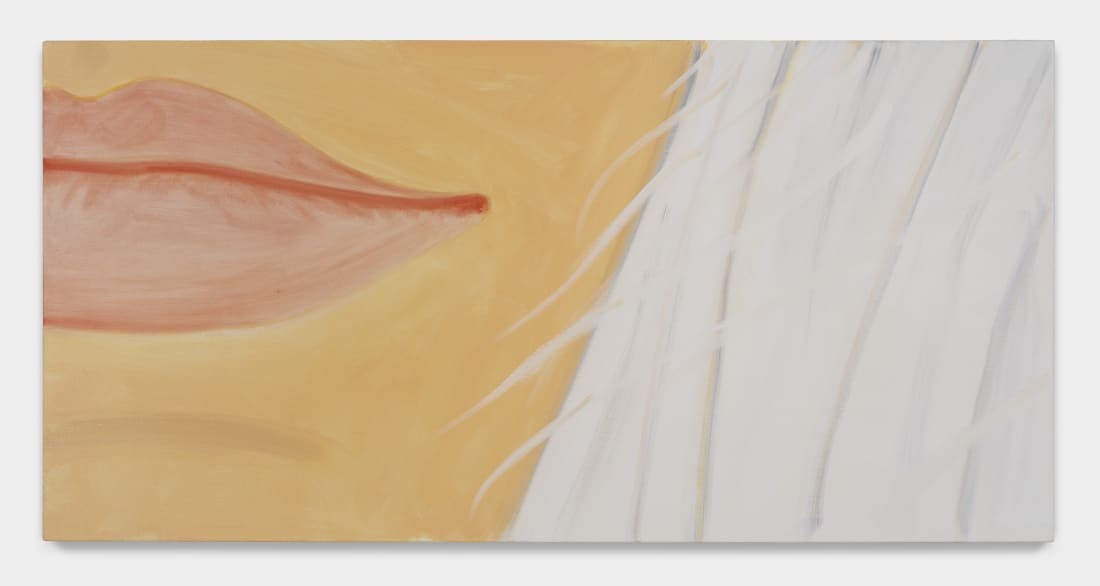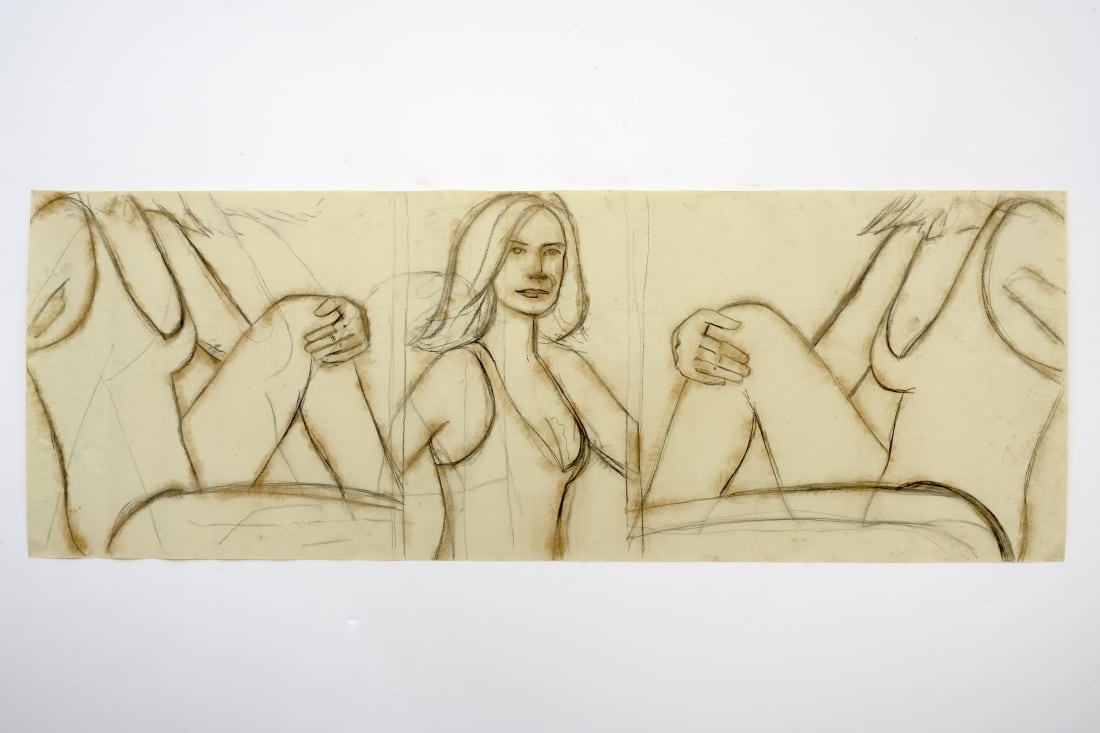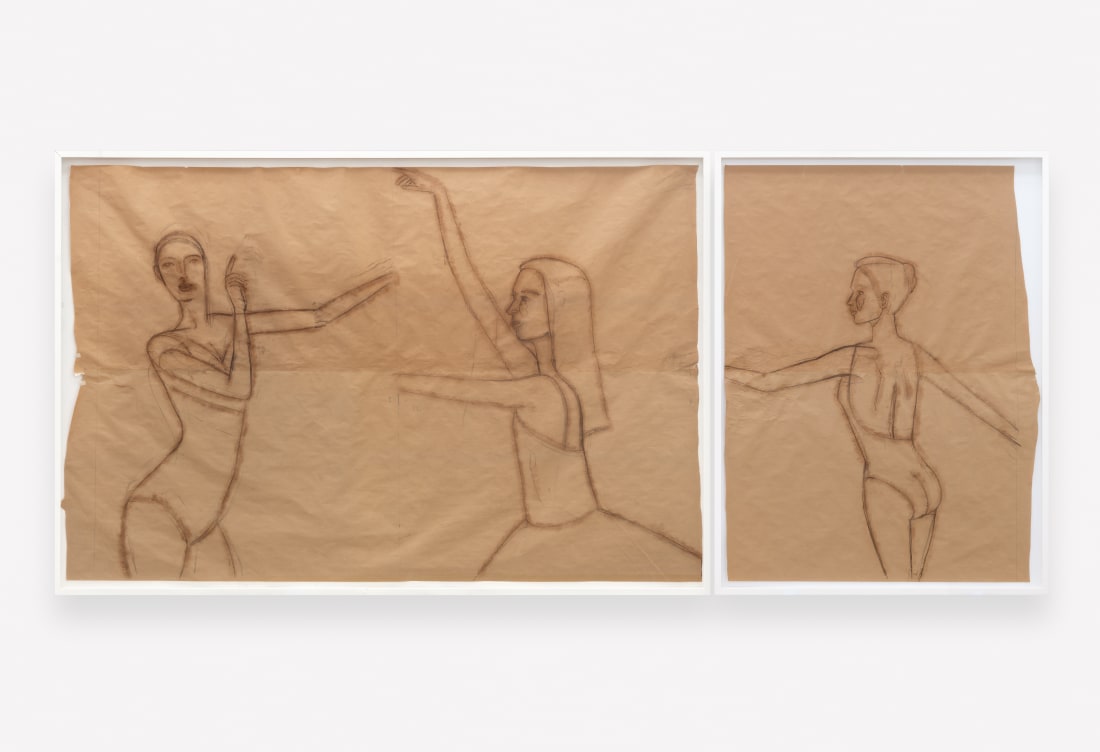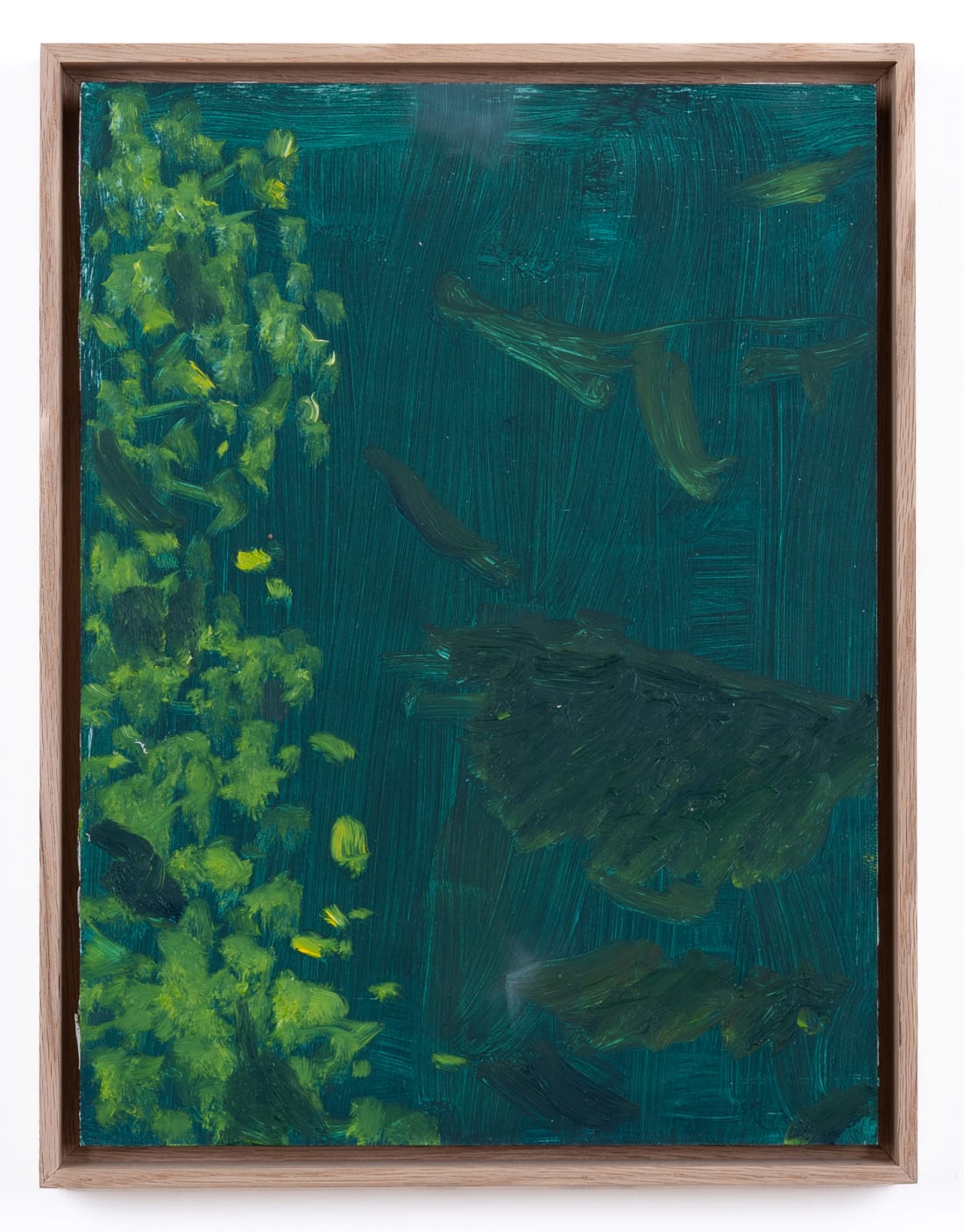
Alex Katz Orange and Black, 2006
In the early 1950s, the New York painter Alex Katz developed his stylised aesthetic in reaction to Abstract Expressionism, finding his own distinctive resolution between formalism and representation. He makes paintings in which line and form are expressed through carefully composed strokes and planes of flat colour. The landscape Orange and Black (2006) is an example of Katz’s lifelong desire to paint the ‘immediate present’. The trees silhouetted against a glowing, vividly orange sky evoke a particular time of day, capturing a moment in time that is at once unique and universal. To achieve this effect, Katz focuses on light rather than colour: ‘the colours are irrelevant,’ he explains. ‘I can change the colours as long as I’ve got the light.’ His discovery of painting ‘en plein air’ while studying at the Skowhegan School in Maine was a decisive turning point for the American painter. At Skowhegan, suddenly faced with the forests, meadows and lakes of the surrounding landscape, he felt an unexpected sense of spontaneity and liberation.
Alex Katz’s major career retrospective, Gathering, is currently on view at the Solomon R. Guggenheim Museum in New York until February 2023.
